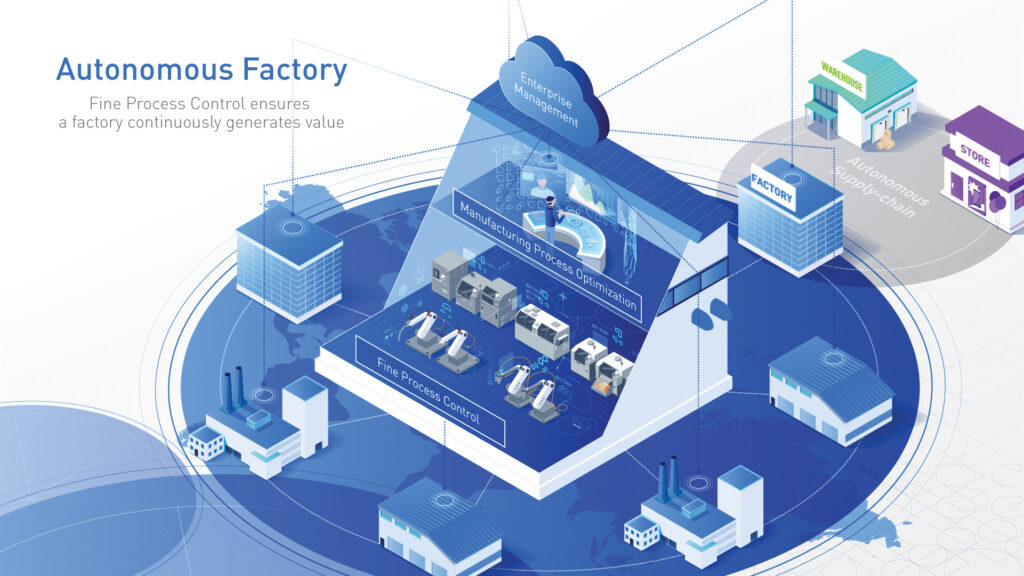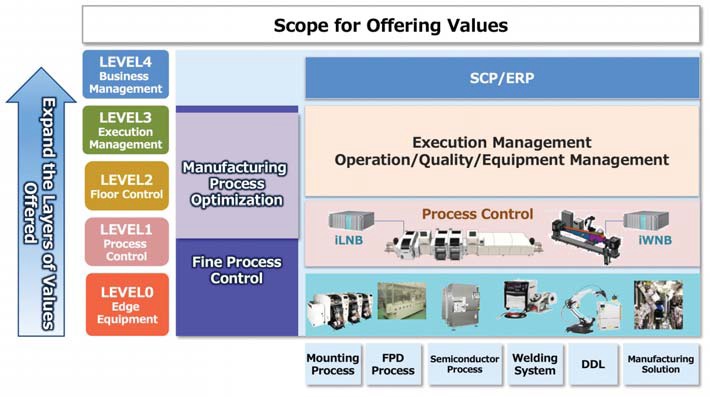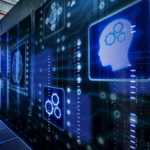ASIA ELECTRONICS INDUSTRYYOUR WINDOW TO SMART MANUFACTURING
Panasonic Eyes Autonomous Factory for Future of Manufacturing
Manufacturing sites unceasingly face the challenges of quality, delivery time, and cost, and it is assumed that all factories are coping with the same challenges by employing various means at this particular moment.
As it stands, many of those efforts must be based on a buildup approach by addressing the challenge at production sites one step at a time; this, as skilled workers who have gained long experience at the manufacturing site carry out kaizen (improvement) activities relying on their experience, intuition, and gut, or as new facilities are deployed to increase productivity, thereby improving quality and production efficiency steadily.
The environment surrounding the manufacturing industry, however, is changing more drastically than ever before as digital society makes strides forward, and economic activities change, forcing companies to respond to customers in many different ways, accelerating borderlessness of business, and global environment or natural calamity. On the back of this radically changing environment, manufacturers are required to deal with diverse challenges, such as high-mix low-volume production, shorter product cycles, and tighter traceability control.

Further, in recent years, the industry has unexpectedly been hit by the COVID-19 pandemic and become painfully aware that it has entered the phase, in which efforts at the manufacturing site alone are not enough to cope with these issues any longer. Will the manufacturing industry be able to continue with the approach that has relied on experience, intuition, and gut? It is believed that now is the time to think about the future of manufacturing by going beyond boundaries between companies.
Core Business Value
Panasonic Smart Factory Solutions Co., Ltd. considers this crisis as an opportunity to translate it into further advancement through reforming the processes at manufacturing site in collaboration with customers. To meet this goal, the company positions “on-site process innovation” as its core business. In order to respond to an ever-changing environment and ensure a sustainable future, what should the people in the manufacturing sector do right now? It is essential to carry out kaizen activities speedily and repeatedly while leveraging latest technologies, such as internet of things (IoT), sensing, artificial intelligence (AI), and robotics, to give rise to innovation, i.e., putting digital transformation in the manufacturing industry into practice. The image of a future factory that Panasonic envisions is an “Autonomous Factory” (Fig. 1), which responds to any situation instantly and keeps evolving autonomously.

Aims for Autonomous Factory
In an Autonomous Factory, as an initial step, the whole production floor will be optimized. At the manufacturing site where sophisticated and precise processing and manufacturing are required, it will help provide feedback about inspection data between devices in real time while conducting statistical processing concurrently, thereby boosting production accuracy. Further, the equipment will predict an abnormality or change on its own, and devices will complement each other, thereby controlling the production line as a whole. Moreover, parameter setting or recipe control, which requires fi ne-tuning and has traditionally been handled by a “master craftsman,” will be automated, and information associated with production, such as change in people and materials, will also be integrated to increase productivity. A sophisticated and precise process like that, namely, fine process control will help elevate the production floor to an optimized autonomous one.
Then, the factory as a whole will be optimized. With constantly changing demands, it will continuously figure out optimized solutions, such as production plans and order, staffi ng, and the order of moving things, to control and optimize them, thereby increasing the factory’s profit-earning capacity through linkage with business management.
On top of these, an Autonomous Factory will not only optimize the manufacturing area but evolve through organic connections with logistics and distribution as well. Panasonic hopes to become a partner whom customers can trust by building a factory that goes beyond the confines of a factory and keeps evolving while identifying the situation of logistics and distribution as well as issues and needs of customers intuitively, and responding to them immediately. As a result, the company should be able to contribute to optimizing the supply chain as a whole as well. (Fig. 2).
Since it was founded, Panasonic has delivered globally a wide range of products and solutions from devices, including electronic parts and components, to home electric appliances, to solutions for corporate customers and social infrastructures to a wide array of customers.
Further, the company has also addressed social challenges in a bid to respond to changes and needs of the times with the help of a large number of business partners over the past 100 years.
While peoples’ lives and society as a whole change dramatically down the road, Panasonic hopes to help customers manage their business and accelerate co-creation further through pursuing fine process control and optimization of the manufacturing process that leverage know-how on manufacturing it has acquired to date with an eye toward the realization of an Autonomous Factory and the creation of a sustainable future in tandem with customers.
About This Article:
The author is Masahiro Sakata, Corporate Planning Department, Panasonic Smart Factory Solutions Co., Ltd.




